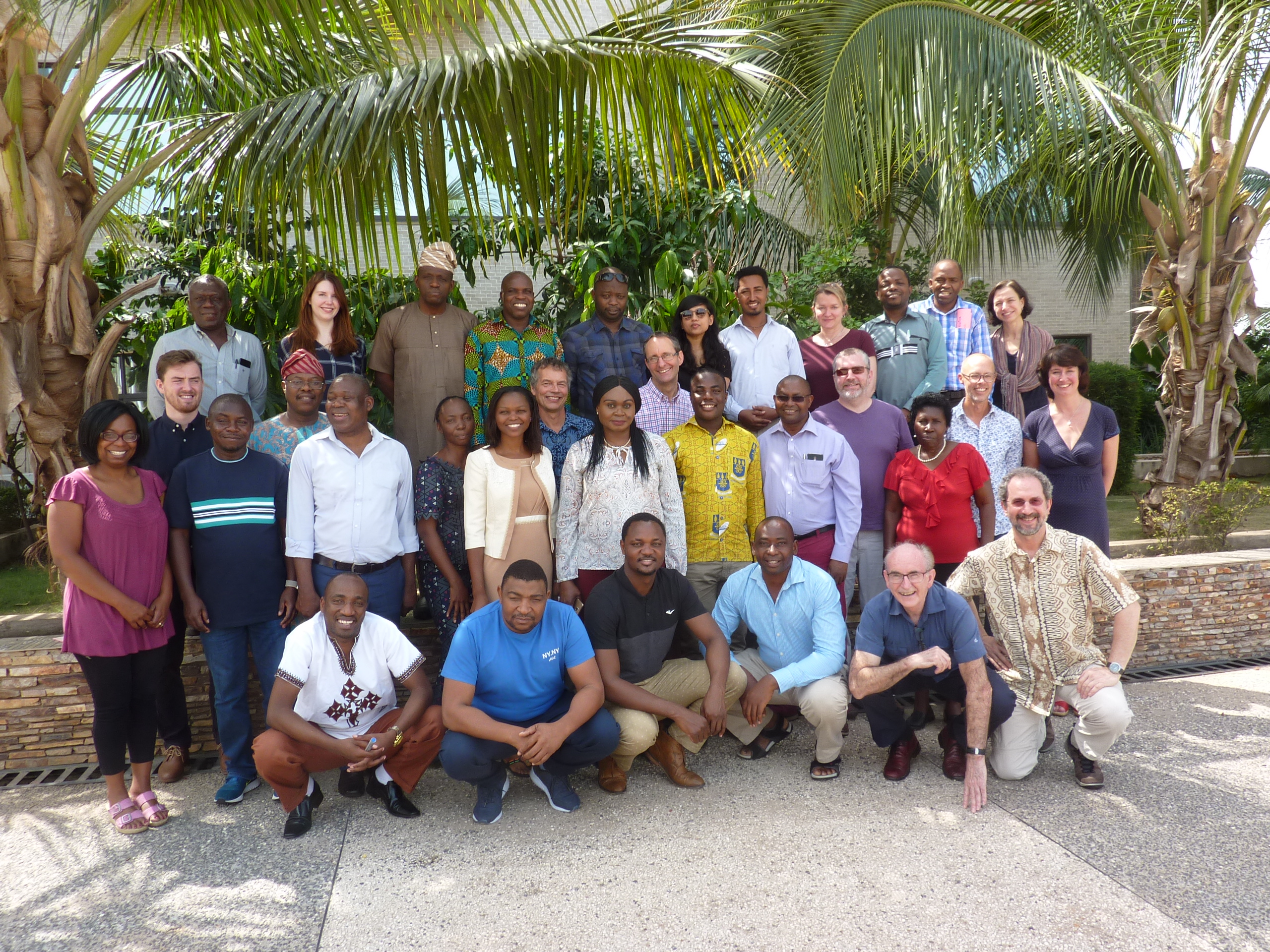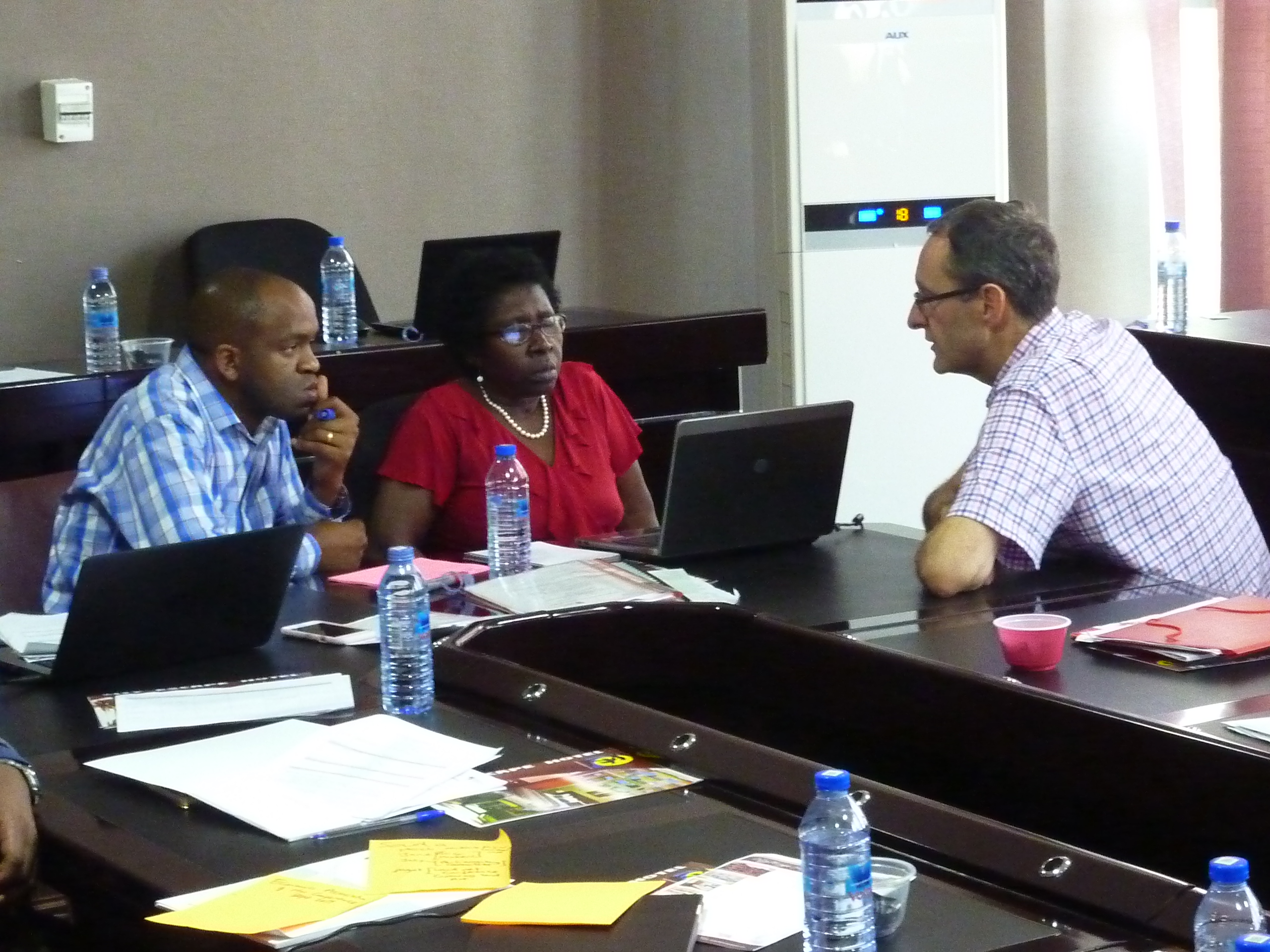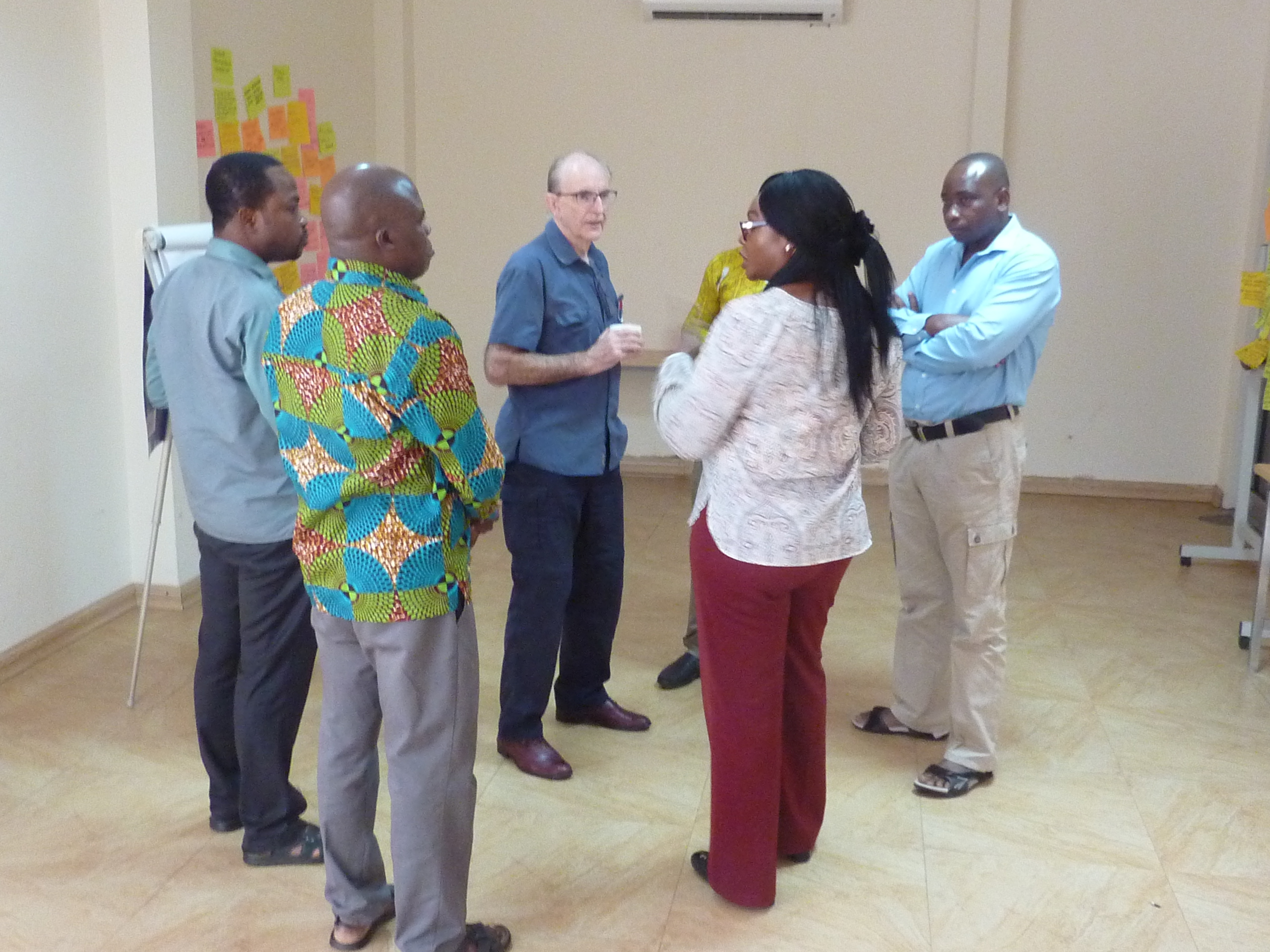APRA Annual Review Workshop 2018

It has successfully happened again! Following Cape Town in 2017, the APRA Annual Review Workshop train landed in Accra, Ghana from 3–6 December 2018. This year, the City Escape Hotel in Prampram (an eastern suburb town located 34 kilometres from Central Accra) was host to APRA teams working in various work streams across in the sub-Saharan Africa region, as well officials from the APRA Consortium at the Institute of Development Studies. As the name implies, the City Escape Hotel provided a serene environment for fruitful discourse throughout the 3-day workshop.
As Chinua Achebe puts it, “When we gather together in the moonlit village ground it is not because of the moon. Every man can see it in his own compound. We come together because it is good for kinsmen to do so”. This time the saying relates to the “kinsmen” of APRA who gathered in Accra to deliberate on the various research activities undertaken during the course of the year, and to chart the path for greater research impact going forward.

APRA researchers, Chris Magomba, Aida Isinika and Colin Poulton, in discussion
Highlights of the workshop include presentations of key findings emerging from the various work streams and country studies, to tease-out cross-cutting themes evident from the results so far – as well as to clearly outline the next steps towards a successful completion of the various research streams initiated in the study countries.
Critical deliberations following the workshop presentations brought to light many questions demanding answers in the next phase of the study. For instance, in Tanzania, evidence from the work stream 1 study revealed that medium-scale farmers are poorer in assets than the small-scale farmers. Preliminary investigations of this ‘puzzle’ showed that medium-scale farmers in the study area are generally pastoralists, who received large-scale marshy areas which they developed into large-scale rice farms. Despite this, the pastoralists exhibit a way of life that may not fully support the concept of asset poverty. Traditionally, pastoralists rarely construct houses or owns assets in a way that is measurable to standard income status indicators. In this case, does the asset poverty indicator depict the true poverty status of the pastorals? This question could be answered in a follow-up study using a qualitative approach.
The following are 10 key lessons gleaned from this year’s APRA Annual Review and Planning workshop:

APRA researchers speaking with African Union representative, Janet Edeme
- Agricultural commercialisation accompanies and supports the wider structural transformation of the economy and is driven by private agents (farmers, downstream actors) who invest in response to changing market demand. However, it is also facilitated or constrained by public interventions, which can influence processes of commercialisation at farm level (smallholder commercialisation vs. medium- and large-scale farms). Rent-seeking linked to these interventions can encourage or impede the pace and trajectory of commercialisation. Rent-seeking behaviour was observed in all of our APRA countries. In some cases, this has led to investments in public goods and productive activities, but in others it has resulted in elite capture and the closing down of commercialisation pathways, particularly for smallholders.
- Agricultural mechanisation is on the increase in sub-Saharan Africa, driving accumulation from above (large farms and companies being subsidised) and accumulation from below (with small- and medium-scale farmers gradually investing).
- There is a significant emergence of medium-scale farms in various African countries, including Nigeria. This has led to some positive synergies with nearby smallholder households, such as the provision of private mechanisation and advisory services and the pulling in of commodity traders and input distributors. But it has also led to some negative impacts on those small producers, including greater inequality of farmland distribution and some displacement due to rising land prices, which is inhibiting access to land for young people.
- Smallholder farmers are facing severe food insecurity challenges in Nigeria.
- Medium-scale producers are not always better off than their small-scale counterparts. In Tanzania, medium scale rice farmers are comparatively poorer on the multidimensional poverty indicator (MPI) compared to small-scale rice farmers in the APRA study region, due to certain socio-cultural reasons. However, they are also driving intensification and innovation in rice commercialisation in the area as they are the primary providers of animal traction services in the areas.
- Companies are investing in African agriculture because of market opportunity, influenced by demand – foreign/domestic; agroecology (soil, climate); and risk (diversification as a risk mitigation strategy). Sources of funding and land availability are crucial determinants of the flow of investments into various agricultural commercialisation pathways. Small- and medium-sized African entrepreneurs are particularly affected by poor access to capital.
- Agriculture appears to be a second-best solution for many youth engaged in the sector, and school dropouts are on the rise among young people working in agriculture. However, if a young person has to live in a rural area, being in an area of intensive agricultural commercialisation, compared to one with limited commercial activity, is probably as good as it gets. Policymakers might want to focus on supporting these youth through improved education and training and social protection measures that buffer them from particular shocks and stresses, and allow them to move from ‘hanging in’ to ‘stepping up’ to higher return commercial activities.
- There is a very high level of agricultural commercialisation and specialisation among oil palm farmers in south-western Ghana, with moderate returns to farm labour higher than the national average. This suggests that food markets are functioning well in the region as the oil palm producers are able to rely on them to meet their household food needs, while concentrating on producing, processing and selling a high-value commodity crop.
- There are significant complementarities between commercialisation and agricultural productivity among tobacco and maize farmers in Zimbabwe. Perhaps not surprisingly, input intensity is higher for tobacco farmers relative to maize farmers.
- Our APRA blogs create narratives about key policy debates or issues, and should be seen as another source of evidence and a pathway to other outputs in the research process.
Written by Louis Hodey, APRA Ghana
